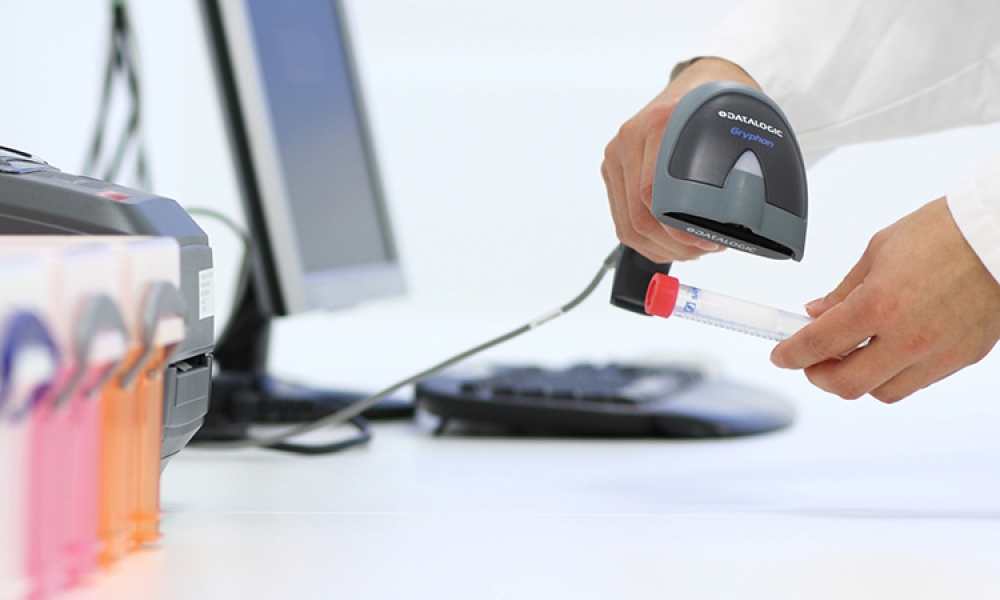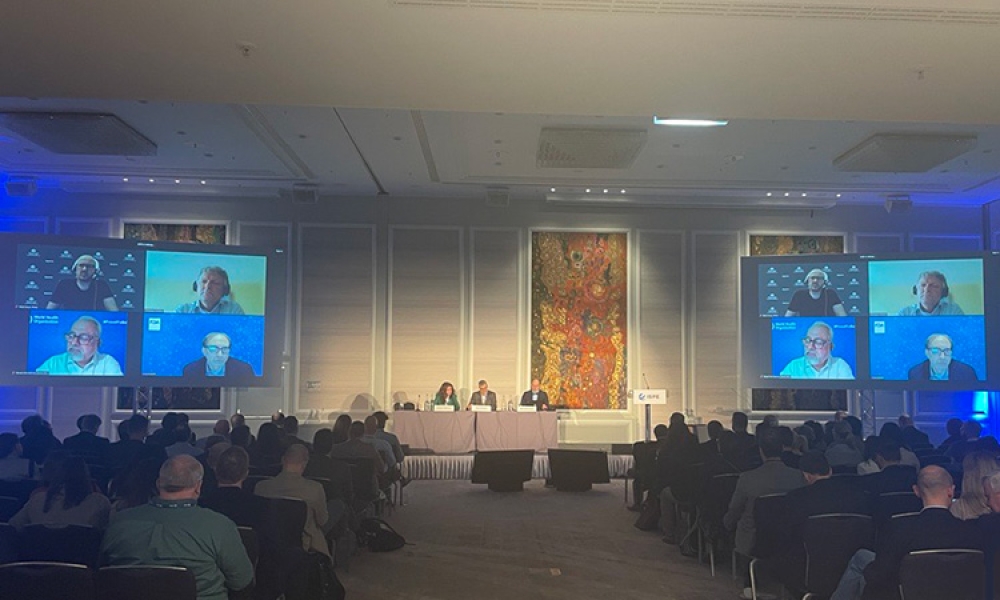ISPE Comments to the Annex 2 PIC/S Draft Revision

Annex 2 is the Good Manufacturing Practices (GMP) document by the Pharmaceutical Inspection Co-operation Scheme (PIC/S) addressing manufacture of biological medicinal substances and products for human use. This article shares information about Annex 2 and ISPE’s submitted comments to the draft revision of Annex 2 that was released for public consultation in September 2019.
The Pharmaceutical Inspection Co-operation Scheme (PIC/S) was created in 1995 to be a nonbinding formal cooperative arrangement among regulatory authorities in the field of Good Manufacturing Practices (GMP) of medicinal products for human or veterinary use. The PIC/S had 53 members as of January 2020. The PIC/S objectives are to harmonize inspection procedures worldwide. This is reflected in the PIC/S mission: “Lead international development, implementation and maintenance of harmonized GMP standards and quality systems of inspectorates in the field of medicinal products.”1
The draft revision of Annex 2 issued for public consultation is divided into two parts:
- Annex 2A for Manufacture of Advanced Therapy Medicinal Products for Human Use
- Annex 2B for Manufacture of Biological Medicinal Substances and Products for Human Use
The revision of this document was required to take into account the international development in the regulation of advanced therapy medicinal products (ATMP), with particular attention to the new European Commission guideline on GMP for ATMP,2 while addressing at the same time concerns of PIC/S Participating Authorities with regard to patient safety and proportionate regulation for ATMPs. Draft Annex 2B is the revised version of EU Annex 2 for biologics (excluding ATMPs).
Focused Consultation
The commenting period was from 20 September 2019 to 20 December 2019. Organizations and companies were asked to submit their comments to six predefined organizations; ISPE was one of them. The PIC/S has structured the consultation around specific questions and allowed for additional comments on a line-by-line basis. During the commenting process, ISPE had the opportunity to discuss directly with the PIC/S the new annex, which facilitated more precision when answering the questions.
The comments submitted by ISPE members, Affiliates, Communities of Practice (CoPs), and pharmaceutical companies through their members were collected and consolidated by the ISPE Comment Lead Team for Annex 2 appointed by ISPE.
After 20 September 2019, the team compiled all received comments and started a short period to review all the comments from 23 December 2019 to 6 January 2020. This was a strong effort. During this period, the team had a two-hour conference call every two days to check the questions’ answers and check the comments line by line. The team made a great effort to comply with the due dates. The final review and approval have been made by the team’s regulatory advisors.
Comments
In this article, we reproduce the questions from PIC/S and the answers provided by ISPE. They are the main body of the consultation and address the most significant aspects. The ISPE Comment Lead Team sees this focused consultation process to be of high value and a good example to follow in the future. This structured way of commenting on a regulatory document helps to focus and consolidate the key view of industry stakeholders and should facilitate the next steps of the revision process.
Question #1: Scope of Guidance Document
What are your views on ATMP guidance applying to the manufacture of ATMP products as described in the following illustrations (line 58 of the consultation document)?
As an alternative, should plasmid manufacturing and/or virus manufacturing be in scope of this document, if yes in what form?
ISPE Answer
As ATMP’s materials are not covered by the ICH Q7 Guide, the EU GMP Part II or the PIC/S GMP Guide Part II, we consider these materials need to be part of revised Annex 2 PIC/S Part A. We suggest the proposed extension to virus and plasmid could be incorporated, as well as mRNA.
The document should, however, address these materials (virus, plasmid, mRNA manufacturing) in a flexible way to allow for new starting materials that emerge in the future to be included in the scope without requiring a new revision of the document.
The increase of GMP requirements as the production steps come closer to the finished product is good and needs to be retained as a principle.
We suggest to split the table in a different way, with one part dedicated to Drug Substances and another part dedicated to final product manufacturing, formulation, and filling. This could incorporate different levels of requirement of GMP.
We suggest adding an arrow below the table to show the increase of GMP requirements following the processes steps coming closer to the final steps.
We suggest as well to have Annex 2A linked with PIC/S GMP Part II (ICH Q7A).
We propose having a separate Establishment of MCB and WCB with appropriate level of GMP requirements box and not positioned as they are in the table.
Question #2: Product Quality Review in Clinical Trial Phases
Considering the length of time that some advanced therapy investigational medicinal products (ATIMP) could be in clinical trial phase, is there a need to include requirements to periodically perform a Product Quality Review proportionate to the development stage? Currently, product quality reviews are not required for medicinal products in a clinical trial phase. Expectations for a Product Quality Review for ATIMP could consider aspects found in Section 1.10 of the PIC/S Guide to Good Manufacturing Practice for Medicinal Products Part I Chapter 1 Product Quality Review. This could include …
ISPE Answer
For this section, we consider that clause 1.4 of Part 1 of GMP PIC/S is more appropriate, rather than clause 1.10.
A full quality review as per marketed products seems not to be desirable, which is consistent with the approach for clinical products. Nevertheless, based on quality risk management (QRM) principles, a review of quality information from previous batches and previous steps would be useful. Trend analysis requiring more data information should not be required.
This review should consider points i, ii, iii, iv, v, vii, ix, xi, & xii of section 1.10 of the PIC/S GMP Guide Part I, as these points need to be part of the manufacturing preparation to keep production under control. We suggest to remove from the new section 1.10 for ATMPs at the clinical stage points vi, viii, x, which are not relevant for these products at the clinical stage of development.
The following steps under quality risk management should be adapted to the stage of product development: The premises and equipment used for clinical trials should be qualified. Due to potential low manufacturing activity, inspection or checking of facilities and equipment should be performed at appropriate intervals. Production should be verified in a continual way by examination of increasing amounts of in-process data to keep the process under control without having a full process validation.
Question #3: Working Environment Requirements when Processing Is not Performed in a Closed System
What are your views on the expectation for the working environment requirements when processing is not performed in a closed system? Section 3.13 of the attached consultation document for Annex 2A presents a PIC/S proposal. These expectations align the same requirements expected for the manufacture of sterile medicinal products but allow for an exception based system if authorized by the competent authority.
You may need to make reference PIC/S PE 009-14 PIC/S Guide to Good Manufacturing Practice for Medicinal Products Annex 1 Section 1 to 35. Please note that Annex 1 has recently concluded a consultation and is currently being revised.
ISPE Answer
It is not necessary for all ATMPs to be manufactured under sterile conditions. If the products can be sterilized after a process step, less stringent conditions can be applied. If the product cannot be sterilized, then more environmental verification should be carried out at the most critical parts of the process.
When a product is intended for a life-threatened product, with no manufacturing alternatives, then with national competent authority’s (NCA) agreement less stringent conditions should be acceptable based on quality risk management reviews and contamination control strategy (CCS) principles.
When processes are made in a non-closed system, it is appropriate to refer to Annex 1 GMPs for the parts relevant for ATMPs with respect to particle count, bacteria count, airflow checking. Air classification should be defined following quality risk management and contamination control strategy principles. Based on contamination control strategy, the appropriate level of air classification should be determined having regard to the specific risks, taking into account the nature of the product, its relevant critical quality and safety attributes, and the manufacturing process step. We suggest keeping reference to Annex 1 parts relevant to ATMPs even with the future release of the revision of this document.
When a product is intended for a life-threatened product, with no manufacturing alternatives, then with national competent authority’s agreement less stringent conditions should be acceptable based on quality risk management reviews and contamination control strategy principles. These production conditions need to be defined before approval, and additional environmental verification at the most critical point should be made during production to demonstrate that the product and the patient are not at risk.
Question #4: Equipment Use when Manufacturing Extends into Hospitals
What are your views on the expectations to address facilities and equipment used in a hospital ward or theatre? Section 3.14 of the attached consultation document on Annex 2A presents a PIC/S proposal when certain manufacturing activities must be extended into hospitals as part of decentralized or point of care manufacturing.
You may need to make reference PIC/S PE 009-14 PIC/S Guide to Good Manufacturing Practice for Medicinal Products Annex 15 on Qualification and Validation or Annex 20 on Quality Risk Management.
ISPE Answer
Performing production steps in premises that are not under direct control of the marketing authorization holder (MAH) or Sponsor environment should be approved by Competent Authorities as part of the process. The marketing authorization holder needs to keep under control those process steps for which it has direct control, and ensure equipment has been verified using Annex 15 recommendation as support (PIC/S Annex 15 will be considered a support documentation). Responsibility for assuring the quality of the manufacturing supply chain remains with the marketing authorization holder.
Manufacturing steps performed in premises that are not under direct control of themarketing authorization holder or Sponsor environment such as a hospital ward or theatre should be carried out under a recognized Quality System. Premises and equipment if not qualified should be verified following hospital equipment and premises verification rules bringing to the installations the appropriate level of confidence for the intend use. We suggest making GMP Annex 15 a non-mandatory document, and used only as a support document.
Question #5: Batch Release when Product Does not Comply with Specification
What are your views on the expectations specified when release of a batch may be in a patient[‘s] best interest but it does not comply with specification? Section 5.45 and 5.46 of the attached consultation document on Annex 2A present a PIC/S proposal.
ISPE Answer
As indicated in the proposed text, connection between the treating physician and authorised person of marketing authorization holder or manufacturer is a critical point, especially when a batch not complying with its release specification is proposed for administration. The authorised person should be consulted to provide input to the treating physician’s risk assessment. However, the sole responsibility for administering the treatment rests with the treating physician.
Even in a PIC/S document, we suggest clarifying the Notification to the Competent Authorities in Europe, which requires 3 Authorities to be informed (Supervisory Authority in EU and EMA + National Competent Authority). This could be a note in the document.
Question #6: Batch Release in Cases of Decentralized or Point of Care Manufacturing
What are your views on the expectations to address batch release when certain steps of manufacturing are decentralized or occur at the point of care? Section 5.47 and 5.48 of the attached consultation documents on Annex 2A present a PIC/S proposal.
ISPE Answer
Data collection, data management, data integrity, and delegation of responsibilities related to batch release for such a complicated supply chain is a critical point. Batch release processes and responsibilities need to be fully explained, understood, and documented particularly as batch release may be carried out under electronically shared data. For such products, if there is a short shelf life, the release review should be done in a shorter time frame than one month as proposed as example based on quality risk management if many other batches have to be produced and released in the organization. All listed items in 5.48 seem acceptable and cover all activities under authorised person and marketing authorization holder responsibilities.
All Quality assessments and contracts need to be ready before starting such a batch certification and release process.
Question #7: Starting Material
What are your views on the control of starting materials? Is the approach to control of starting materials sufficiently described in the draft PIC/S Annex 2A Manufacture of Advanced Therapy Medicinal Products for Human Use (Sections 5.24 to 5.33, B1.3 to B1.4, B2.1 to B2.2, and B3.3) when read with other applicable sections of PIC/S Guides or are there any requirements or positions that need to be accounted for with particular reference to critical starting materials, raw materials and active substances?
ISPE Answer
Some active ATMP materials are coming from patients or donors; it needs to be emphasized that the sampling of these materials should be undertaken in a way that will not contaminate the material. Also, the supply chain must allow product transfer without damage to the product.
Application of quality risk management to the total supply chain quality risk management is a critical part of the process to understand the risks to raw material quality. The guidance could be enhanced with a short explanatory paragraph of the importance of quality risk management across the whole supply chain.
We suggest adding a definition of “Raw Materials for ATMPs” in the glossary.
Question #8: Outsourcing to Non-GMP Licensed Third Party in Exceptional Circumstances
What are your views on the expectations that provide flexibility to ensure that specialised testing and collection of human starting material is adapted to the particularities of ATMP while still maintaining the necessary quality of the product and reliability of testing as applicable? Section 7.1 of the attached consultation document on Annex 2A presents a PIC/S proposal.
You may need to make reference PIC/S PE 009-14 PIC/S Guide to Good Manufacturing Practice for Medicinal Products Annex 15 on Qualification and Validation or Annex 20 on Quality Risk Management
ISPE Answer
We suggest not mixing starting materials collection and specialized testing. Both can be carried out in non-GMP environments. Nevertheless, special care has to be taken for material sampling as material will be processed in GMP environments and sampling must not bring contamination to patients. The human starting material collection should be performed according to the national laws on donation of cells and tissues for clinical purposes. A full traceability management needs to be developed.
Even with non-GMP testing laboratories, the equipment and conditions should be commissioned and the laboratory should have procedures and a robust quality system, for example as per ISO 9000 standards. In any case, the marketing authorization holder is responsible for the work done by its subcontractors. Release cannot be delegated.
Question #9: Other Considerations
Is there any other considerations related to GMP for the manufacture of ATMP that you deem important that is not covered by these questions? If so please provide feedback, limited to your top two priorities.
ISPE Answer
We suggest clarifying in the scope of the document or in the Principle section the links between ATMPs GMPs, and Annex 1 when revision is finalized. As ATMPs for some processes do not need to follow aseptic manufacturing, Annex 1 application should be considered based on quality risk management linked with the processes steps and not applicable as per aseptic processing given in the draft Annex 1.
- Quality risk management principles should be enhanced in the document, for example by including a paragraph in the Principles section to cover all the document even in the parts where it is not mentioned. It is recognized that quality risk management is mentioned in section 1.3.
- Software validation should be addressed either in the Principles or Validation section since some practices will require IT communication between production sites.
Conclusion
After this work, the Comment Lead Team wants to thanks all Chapters and Affiliates, Communities of Practice, and members for their participation to this PIC/S consultation to industry. The work and effort to answer the specific questions regulators asked industry stakeholders have been very interesting and should contribute to develop the PIC/S thinking in this rapidly developing industry to establish harmonized international GMP standards.
This article was written by Jean-François Duliere on behalf of the full ISPE Comment Lead Team Annex 2 PIC/S: Jean-François Duliere, Richard Denk, Ylva Ek, Alice Redmond, Nuha Al-Hafez, Maria Amaya, David Estape, Oliver Kurz, Vincent J. Cebular, Erich Bozenhardt, Martin Erbo Jensen, Thomas Zimmer, Bruno Dalle, Morad El Gueddari, Charlotte Kornbo, and Donata Canobbio
ISPE Regulatory Advisors: Robert W. Tribe and Christopher N. Potter, PhD



